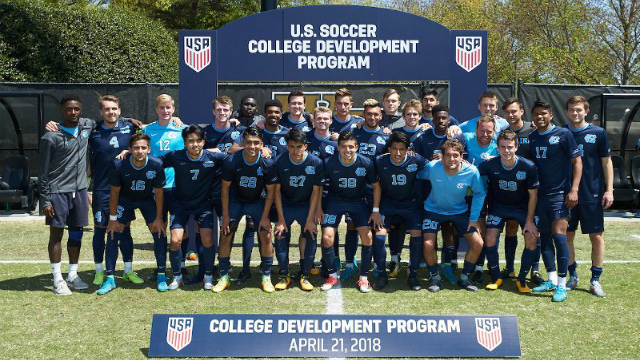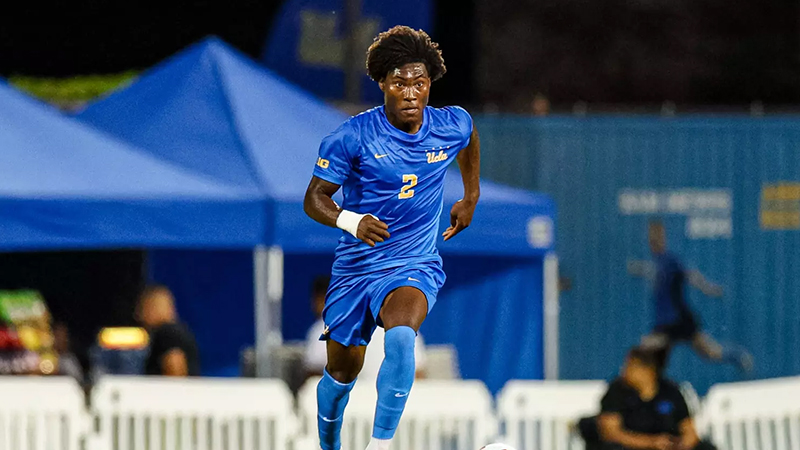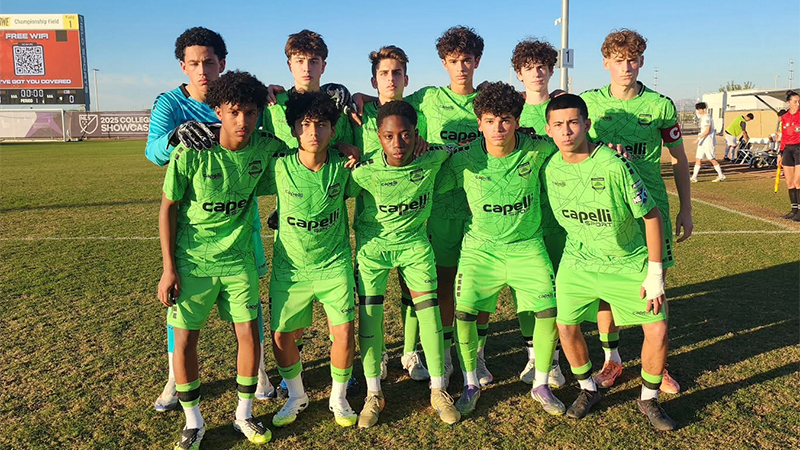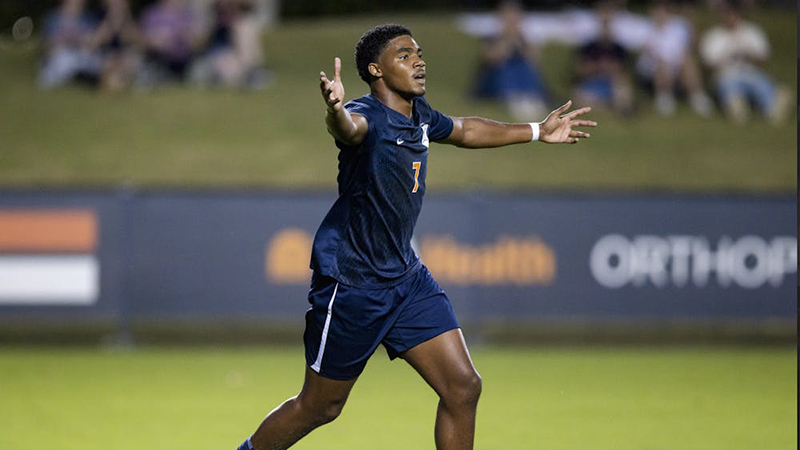Coaches hail U.S. Spring College Program

With spring semesters coming to an end around the country, college soccer programs can now sit back and assess where things stand ahead of the summer.
For most programs, the spring is a mishmash of games with varying rules, lots of substations and a whole host of experimentation.
However, six East Coast programs took part in the first U.S. Spring College Program, which wrapped up with a trio of games on April 21 in Winston Salem, N.C. Working in conjunction with the U.S. Soccer Federation, Clemson, Duke, Georgetown, Wake Forest, North Carolina and Virginia competed in a single-table league that culminated with a final day hosted by the Demon Deacons.
Given both the stature of the programs and the competitive nature of the players and coaches involved, it added a new layer to the spring season that the college coaches enjoyed.
“It created a little bit of a league feel, which was nice, having the table, keeping track of scores,” North Carolina head coach Carlos Somoano told topdrawersoccer.com. “I think it makes it interesting. I thought that was positive. The other thing that was positive about it was everybody playing with the same rules regardless of what they are. Sometimes in the spring games you’ll play, even when you play pro teams, they’ll be subbing their entire team at halftime, so you play two groups of 11, it doesn’t feel as much of a competitive game.”
Added Wake Forest head coach Bobby Muuss: “The biggest change for me is putting the word league [in front of it]. I think it’s what changes is when there are points given for winners. We’re all competitive programs, so the intensity of the games were more fall-like than spring-like.”
Coupled with the higher level of competition, the rules were different than in either the fall season or a typical spring season. With an eye on having college games played closer to FIFA rules, teams had to pick an 18-man roster for each game. They were allowed only three moments to sub during each game, while the referee kept time on the field.
That created unique challenges for each respective program. Most teams are depleted in the spring season to begin with, between the early losses to pro soccer or graduation. Wake Forest, which had lost seven players to MLS, worked through some of those issues.
“Numbers are never fall numbers because you lose your seniors,” Muuss said. “So depending on the size of your senior class, there’s always challenges in the spring. I always tell my group in the spring that this is an opportunity for three, four guys – I don’t want to say 10 because I think it’s unrealistic – that maybe go from role players or didn’t play much at all to really make a claim for a spot on the field in the fall.”
Georgetown had the opposite problem. Despite injuries to top players like Dylan Nealis, Achara and Brendan McDonough, they still had 21 players for 18 roster spots. So while that limited playing time for a few reserves on each gameday, the team had to field an understrength roster during most of the spring.
Despite that, Hoya head coach Brian Wiese was pleased with the way his younger group handled the pressure and learned lessons.
“If you’re sitting here competitive and trying to win, you’re not super happy with how it looks,” he told topdrawersoccer.com. “But if you’re looking at the minutes those guys got, it’s a pretty nice investment for their own development. Our last game, I thought we were sixes and sevens in a lot of these games. All of these teams are diminished from what they should be, maybe with the exception of UNC.
“When our guys made mistakes in the games, they were typically punished with goals. And that’s really healthy at this stage. Lessons get learned much more quickly when that happens. I thought that was really positive, there were frustrating moments from a lot of these games but I think the guys really learned from some of that.”
From a competition standpoint, North Carolina finished as “champions” of the spring league, winning all five games in impressive fashion: 4-1 over Clemson, 4-0 against Georgetown, topping UVA 2-1 beating Wake Forest 2-0 and edging Duke 1-0 on the final day.
More importantly than the games themselves, the event perhaps laid the groundwork for a stronger working relationship between U.S. Soccer and the college game. U.S. U20 MNT head coach Tab Ramos reached out to the college programs to get the ball rolling, eventually culminating with the announcement.
“A few months before the spring I got a text message from Tab who said, ‘do you have some time, I want to go over a couple of things’ and proposed the idea,” Muuss said. “We talked on the phone and the coaches all got together on a conference call with U.S. Soccer and proposed it. We had some ideas, we worked together a bit, they had a philosophy and umbrella they wanted to do this under and we were all on board to give it a whirl.”
As a result, U.S. Soccer provided support throughout the spring. They scouted during the season, all games were filmed, allowing each team to scout and prepare for each match – certainly a unique element to the spring season – and Opta even provided analytics from the games. During the final Spring Festival at Wake Forest, Ramos and Development Academy Director Jared Micklos led coaching education courses, while the Federation and six college head coaches were also able to get together and talk soccer.
Will it lead to vast changes in the game? It’s far too early to tell. But for each coach, it was nothing but positive to work closely together with the Federation.
“Having a relationship with U.S. Soccer is critical for the sport in our country,” Somoano said. “That college athletics and U.S. Soccer have a relationship, I just think it is important for the culture of this game in our country. We have a culture of college athletics [in our country], and I think getting U.S. Soccer and college athletics together can help our sport grow. It helps us improve our game, our product, our message to our kids, our message to our schools, it helps the game grow in this country.”
Nathaniel Crofts Jr. helped the Cavaliers erase a 1-0 halftime deficit with a pair of goals on Saturday against Wake Forest in the @ussoccer Spring College Program pic.twitter.com/bZOOXUzH0N
— Virginia Men's Soccer (@UVAMenSoccer) April 23, 2018
Headlines
- Recruiting Roundup: December 15-21
- How Do I Get Scouted by TopDrawerSoccer?
- 2026 Women's Division I Transfer Tracker
- 2026 Major League Soccer Mock Draft
- Women's College Postseason Top 100 Players
-
Top MLS Academy Alumni Performances

-
MLS NEXT Fest: U15/16 Goal-Scoring Stars

-
Commitments: HS Star heads to Portland

-
Player Rankings Spotlight: 2026 Girls

- 2025 Women's DI Postseason Awards



